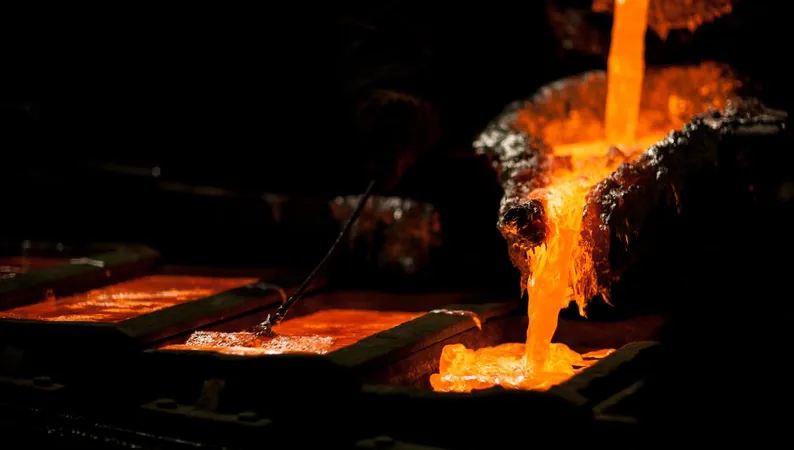
Were Our Ancestors Turning Up the Heat? Hunter-Gatherers May Have Experimented with Metalworking 11,000 Years Ago!
2025-04-02
Author: Ting
The origins of metallurgy remain shrouded in mystery, but new archaeological findings suggest that hunter-gatherer societies might have been dabbling in metalworking much earlier than previously believed. While scholars traditionally trace the beginnings of metallurgy to around 5,350 to 4,600 BCE with confirmed early practices in places like Belovode and Pločnik in Serbia, recent discoveries push those timelines back significantly.
In 2021, researchers unearthed a curious vitrified lump during an excavation at a site known as Gre Filla in the Upper Tigris valley. This artifact was found layered within sediment dated to be nearly 11,000 years old, making it a tantalizing possibility that our ancient ancestors were experimenting with metallurgy long before the advent of agriculture and pottery.
The preliminary analysis of this striking find revealed an intriguing context: the presence of volcanic ash and remnants of cooking fires, alongside the discovery of animal bones. These indicators hint that the area was often used for cooking, raising questions about whether copper within the local soil could have been unintentionally melted during these activities.
However, closer inspection of the lump indicates that this was no mere byproduct of cooking fires. Researchers identified "high-temperature mineral phases," suggesting the metal was subjected to intense heat, around 1,000 °C (1,830 °F). Additional microstructural features imply that rapid cooling occurred after the heating process, further hinting at intentional manipulation.
Notably, the lump displays "depression marks," potentially caused by the inner surfaces of a furnace or kiln, implying it was subjected to extreme temperatures in a controlled environment—a tantalizing notion that our hunter-gatherer ancestors might have been experimenting with early metalworking techniques.
Still, there's a hitch: the absence of an actual furnace close to the lump raises doubts. Only one dome-shaped furnace has been found at Gre Filla so far, and its function remains ambiguous. Moreover, no metallurgical by-products, such as slag, have been recovered. Such evidence would undeniably support the theory of copper smelting among these ancient people, yet their absence makes researchers hesitant to declare definitive conclusions.
While the findings do not confirm full-scale metal smelting, the implications are nonetheless compelling. The discovery of copper droplets suggests that early metallurgic principles—including controlled heating, casting, and possible ore-processing—were potentially being explored in this hunter-gatherer community.
This remarkable research not only casts light on the ingenuity of our ancestors but may also reshape our understanding of the evolution of metallurgy. Could the hunter-gatherers of the Upper Tigris valley have laid the groundwork for one of humanity's most significant technological advancements? As more evidence comes to light, historians and archaeologists are left pondering the fascinating story of humanity's interaction with metal long before the establishment of permanent settlements. Stay tuned, as the archaeological world continues to unearth the mysteries of our past!



 Brasil (PT)
Brasil (PT)
 Canada (EN)
Canada (EN)
 Chile (ES)
Chile (ES)
 Česko (CS)
Česko (CS)
 대한민국 (KO)
대한민국 (KO)
 España (ES)
España (ES)
 France (FR)
France (FR)
 Hong Kong (EN)
Hong Kong (EN)
 Italia (IT)
Italia (IT)
 日本 (JA)
日本 (JA)
 Magyarország (HU)
Magyarország (HU)
 Norge (NO)
Norge (NO)
 Polska (PL)
Polska (PL)
 Schweiz (DE)
Schweiz (DE)
 Singapore (EN)
Singapore (EN)
 Sverige (SV)
Sverige (SV)
 Suomi (FI)
Suomi (FI)
 Türkiye (TR)
Türkiye (TR)
 الإمارات العربية المتحدة (AR)
الإمارات العربية المتحدة (AR)